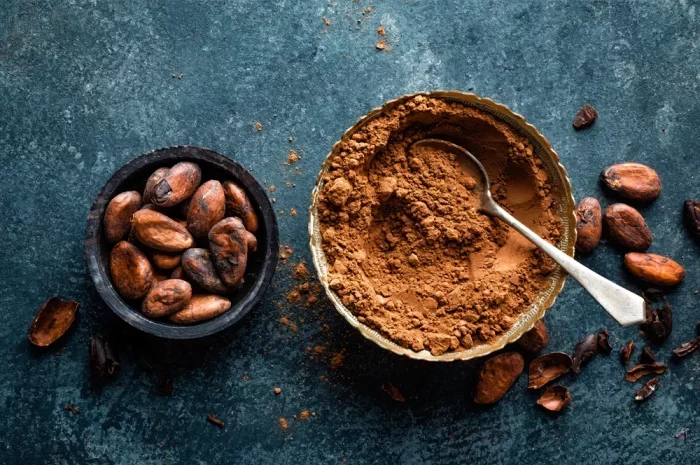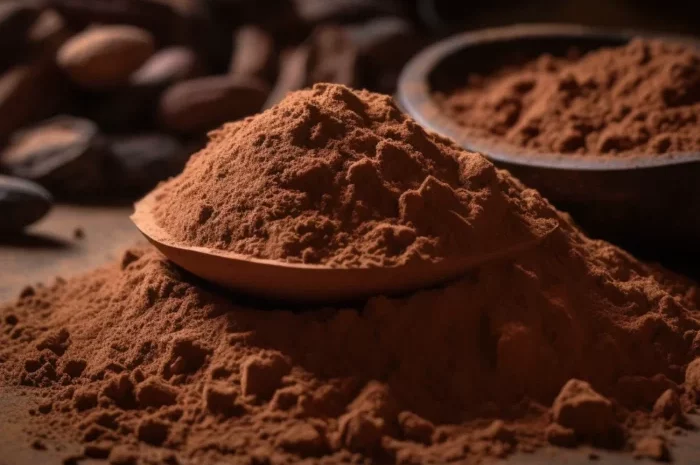In the world of chocolate and health foods, two terms often come up: cocoa and cacao. While they may sound similar, they are not interchangeable. Cocoa and cacao are derived from the same source—the cacao bean—but undergo different processing methods, resulting in distinct flavors, textures, and nutritional profiles.
Understanding the differences between cocoa and cacao is essential for making informed choices about their consumption and harnessing their potential health benefits.
In this comprehensive guide, we’ll delve into the nuances of cocoa and cacao, exploring their origins, processing methods, nutritional compositions, and potential health benefits. By the end, you’ll be equipped to determine which is healthier for your dietary preferences and lifestyle.
Cocoa vs. Cacao: Origins and Processing
Before we delve into the health benefits, let’s clarify the differences between cocoa and cacao:
1. Cacao:
Cacao refers to the raw, unprocessed bean of Theobroma cacao, the tropical tree native to Central and South America.
Cacao beans are harvested from cacao pods, which are cracked open to reveal the seeds inside.
These seeds are then fermented, dried, and roasted at low temperatures to develop their characteristic flavor and aroma.
After roasting, the shells are removed, leaving behind cacao nibs, which can be ground into cacao powder or processed further to extract cacao butter.
2. Cocoa:
Cocoa, on the other hand, refers to the processed form of cacao, typically produced by roasting the cacao beans at higher temperatures.
The higher roasting temperatures lead to a darker color and a more pronounced chocolate flavor in cocoa compared to cacao.
Cocoa beans are then ground into cocoa powder, which is commonly used in baking, hot chocolate, and other culinary applications.
Cocoa powder may undergo additional processing, such as alkalization (also known as Dutch processing), to reduce acidity and bitterness and enhance flavor.
Nutritional Composition of Cocoa and Cacao
The differences in processing methods between cocoa and cacao can impact their nutritional compositions. Here’s a comparison of the nutritional profiles of cocoa and cacao:
1. Cacao:
Raw cacao is rich in nutrients and antioxidants, including flavonoids, polyphenols, and minerals such as magnesium, iron, and zinc.
Cacao is known for its high antioxidant content, which may help reduce inflammation, improve heart health, and protect against oxidative stress.
Raw cacao is also a good source of dietary fiber and essential fatty acids, making it a nutritious addition to a balanced diet.
2. Cocoa:
Cocoa powder retains some of the nutrients and antioxidants found in cacao but may have lower levels due to the higher temperatures used in processing.
Alkalization or Dutch processing can further reduce the antioxidant content of cocoa powder, although it may improve its flavor and color.
Cocoa powder is still a good source of flavonoids and minerals, but it may not offer the same antioxidant benefits as raw cacao.
Health Benefits of Cocoa and Cacao
Both cocoa and cacao offer potential health benefits due to their antioxidant-rich compositions. Here are some of the health benefits associated with cocoa and cacao consumption:
1. Cardiovascular Health:
The flavonoids found in cocoa and cacao have been linked to improved cardiovascular health, including reduced risk of heart disease, lower blood pressure, and improved blood flow.
These compounds may help relax blood vessels, reduce inflammation, and prevent the oxidation of LDL cholesterol, which can contribute to atherosclerosis and heart disease.
2. Brain Health:
Flavonoids and other antioxidants found in cocoa and cacao may have neuroprotective effects, helping to preserve cognitive function and reduce the risk of age-related cognitive decline.
Studies suggest that regular consumption of cocoa and cacao products may improve memory, focus, and overall brain function.
3. Mood Enhancement:
Cocoa and cacao contain compounds such as theobromine, phenylethylamine, and serotonin precursors that may have mood-enhancing effects.
Consuming cocoa and cacao products may promote feelings of happiness, relaxation, and well-being, making them popular choices for indulgent treats and comfort foods.
4. Antioxidant Protection:
The high antioxidant content of cocoa and cacao helps protect cells from oxidative damage caused by free radicals.
Antioxidants found in cocoa and cacao may help reduce inflammation, support the immune system, and lower the risk of chronic diseases such as cancer and diabetes.
Choosing Between Cocoa and Cacao
When it comes to choosing between cocoa and cacao, both can be enjoyed as part of a balanced diet, but there are some factors to consider:
1. Flavor and Texture:
Cacao has a more intense, bitter flavor compared to cocoa, with a slightly gritty texture due to the presence of cacao solids.
Cocoa has a smoother, milder flavor with a richer chocolate taste, making it a popular choice for baking, beverages, and desserts.
2. Nutritional Content:
Raw cacao has a higher nutritional content compared to cocoa, as it undergoes minimal processing and retains more antioxidants and nutrients.
Cocoa powder still offers some health benefits but may have lower levels of antioxidants and nutrients due to processing, especially if alkalized or Dutch processed.
3. Culinary Applications:
Cacao powder is versatile and can be used in smoothies, oatmeal, baking, and raw desserts for a rich chocolate flavor and nutritional boost.
Cocoa powder is commonly used in baking, hot chocolate, chocolate milk, and desserts for its smooth texture and intense chocolate flavor.
Conclusion
In the debate between cocoa vs. cacao: which is healtheir, both offer unique flavors, textures, and nutritional profiles. While raw cacao boasts higher levels of antioxidants and nutrients due to minimal processing, cocoa powder provides a smoother texture and richer chocolate flavor.
Incorporating both cocoa and cacao into your diet can offer a variety of health benefits, including improved cardiovascular health, enhanced brain function, and antioxidant protection. Whether you prefer the intense bitterness of cacao or the smooth richness of cocoa, both can be enjoyed in moderation as part of a balanced diet.
So whether you’re baking a decadent chocolate cake or blending a nutritious smoothie, consider the differences between cocoa and cacao to make informed choices that suit your taste preferences and health goals.

























